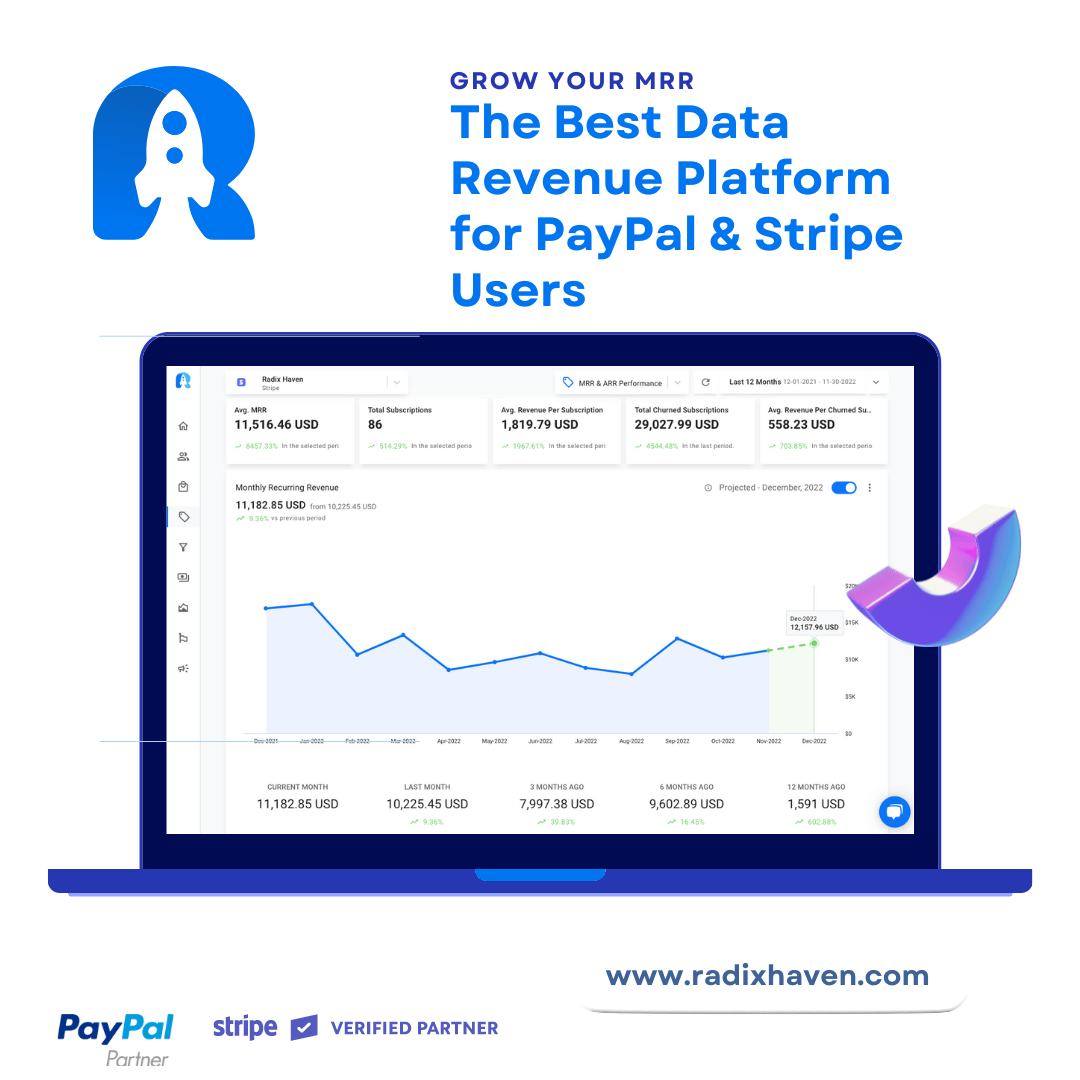Managing a business can be a challenging task, especially when it comes to tracking and analyzing your financial metrics. One of the most critical metrics in any subscription-based business is Monthly Recurring Revenue (MRR). Understanding your MRR movements can help you make informed decisions about your business’s future growth and ensure you remain profitable. In this article, we’ll explore what MRR movements are and how you can use them to track and analyze your business’s financial performance.
What is MRR?
Monthly Recurring Revenue (MRR) is the predictable, recurring revenue that a business generates each month from its customers. It is a crucial metric for subscription-based businesses, as it provides a predictable revenue stream that can be used to forecast future growth and profitability. MRR can come from a variety of sources, including monthly subscriptions, annual subscriptions, or any other type of recurring revenue.
What are MRR movements?
MRR movements refer to the changes in MRR over time. It can be positive, indicating growth in revenue, or negative, indicating a decline in revenue. Tracking MRR movements allows businesses to identify trends in their revenue and make informed decisions about their future growth.
Positive MRR movements
A positive MRR movement means that your revenue is increasing over time. This can be due to several factors, such as an increase in the number of customers, an increase in pricing, or the addition of new products or services.
To determine the cause of a positive MRR movement, it’s essential to analyze other metrics alongside MRR. For example, if you see a significant increase in MRR, but the number of customers has remained the same, it may be due to an increase in pricing or the introduction of a higher-priced subscription plan.
Negative MRR movements
A negative MRR movement means that your revenue is decreasing over time. This can be due to several factors, such as a decrease in the number of customers, a decrease in pricing, or the loss of customers.
To determine the cause of a negative MRR movement, it’s essential to analyze other metrics alongside MRR. For example, if you see a significant decrease in MRR, and the number of customers has decreased as well, it may be due to customer churn. On the other hand, if the number of customers has remained the same, it may be due to a decrease in pricing or the removal of a product or service.
Why track MRR movements?
Tracking MRR movements is critical for any subscription-based business, as it provides insight into the health of your business. By understanding your MRR movements, you can identify trends in your revenue and take action to improve your business’s financial performance.
For example, if you notice a negative MRR movement due to customer churn, you can take steps to improve customer retention, such as offering incentives for customers who stay with your business for a certain period or improving your customer service.
On the other hand, if you notice a positive MRR movement due to an increase in the number of customers, you can take steps to scale your business, such as investing in marketing or hiring additional staff to manage the increased workload.
How to track MRR movements?
Tracking MRR movements can be a challenging task, especially if you’re managing a large number of customers or subscription plans. However, there are several tools and techniques that you can use to make the process easier.
One popular tool for tracking MRR movements is a spreadsheet, such as Google Sheets or Microsoft Excel. You can use these tools to create a table that shows your MRR movements over time, as well as other metrics such as customer acquisition cost (CAC) and customer lifetime value (CLTV).
Another tool that you can use to track MRR movements is a business intelligence platform, such as Radix. Radix allows you to track and analyze all your key performance indicators (KPIs) in one place, including MRR movements. With Radix, you can create customized dashboards that show your MRR movements over time and compare them to other metrics such as customer churn, customer acquisition cost, and more.
In addition to using tools like Radix, it’s also essential to have a clear understanding of your business’s revenue streams and customer behavior. This means tracking metrics such as customer retention rate, average revenue per user (ARPU), and customer lifetime value. By analyzing these metrics, you can gain a more comprehensive understanding of your business’s financial health and identify areas for improvement.
Conclusion
In conclusion, understanding your MRR movements is crucial for any subscription-based business. By tracking and analyzing your MRR over time, you can identify trends in your revenue and take action to improve your business’s financial performance. Whether you’re using a spreadsheet or a business intelligence platform like Radix, it’s essential to have a clear understanding of your key metrics and customer behavior. By doing so, you can make informed decisions about your business’s future growth and profitability.
Therefore, we highly recommend using Radix to track and analyze your MRR movements and overall KPIs. With Radix, you can have real-time insights into your business’s financial health, allowing you to make informed decisions quickly. Don’t wait any longer, sign up for Radix today and take your business to the next level!






